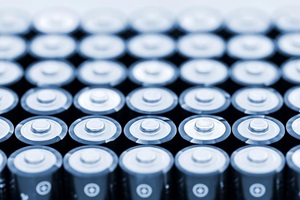- Transportation Efficiencies
- Industrial Innovations
- Battery Electric Vehicles
- Energy Technologies
- Energy Technologies
Steady Improvements Crucial to Building Better Batteries

As the quest for creating a better battery looms, advanced battery research firms and manufacturers are looking for the best ways to optimize their technologies to meet the energy storage applications of the future. Guidehouse Insights believes that focusing on incremental improvements to advanced batteries will be the best path forward in the near term. Doing so presents a logical roadmap that allows companies and research agencies to achieve realistic results.
Pack Configuration Doesn’t Get Enough Attention
While much research has gone into the active components of the battery (i.e., the electrode and electrolyte materials), an important feature of the cell that is often overlooked is the pack configuration. Having an optimized cell design based on the desired use case of the battery can increase the cell’s efficiency by up to 23% that utilizes the same chemistry. As lithium has the tendency to swell during charge/discharge cycles, the enclosure must be robust enough to endure mechanical strain and maintain structural integrity. There are currently three main cell configurations:
- Cylindrical: Components are encased tightly in a can. Often used in smaller electronic applications, but can be manufactured more quickly relative to other cells.
- Prismatic: Electrodes are flat, and require slightly thicker walls compared to cylindrical cells to compensate for decreased mechanical stability. These cells are great to maximize space utilization.
- Pouch: Has the most efficient packing structure of all cell designs and can achieve up to 95% space utilization. The pouch’s tendency to swell discourages use in certain applications and environments.
All three battery cell formats have strengths and weaknesses. The choice between pouch and cylindrical cells is still a matter in progress; Guidehouse Insights expects cylindrical cells and pouch cells to be the most economically feasible with respect to energy density. This consideration is important, particularly in motive applications.
Stability Is Crucial for Continuing Battery Innovation
Advanced battery OEMs are taking competing strategies to tackle EV battery pack related issues. While Tesla has reported high power and energy density of its cylindrical NCM batteries, Korean battery giant SK Innovations is working on its enhanced NCM 811 battery cells in prismatic form. The industry standard for NCM batteries has been 622 (i.e., 60% nickel, 20% cobalt, and 20% manganese); NCM 811 cells are achieving higher densities, translating to up to 700 km on a full charge (~75% increase over NCM 622 cell stacks), but they fall short in terms of thermal stability and safety. SK Innovation plans to integrate its NCM 811 battery in the Kia Niro EV by 2020; it is advertised to have approximately 500 km of range and battery of over 70 kWh.
Other Battery Development Goals
LG Chem is working to deliver a cylindrical NCM 811 battery before SK Innovation, saying that it will have these cells deployed in electric buses in 2018. The company upgraded the Renault Zoe’s battery capacity up 76% while maintaining the same volume and slightly increasing the weight of the pack.
Panasonic also made improvements to its prismatic cells through construction changes. The 2019 Ford Fusion Energi PHEV received a 18% boost in energy capacity from 7.6 to 9.0 kWh. The pack is the same size with the same number of cells and unchanged chemistry, but the separator thickness inside the cell has been reduced. This allows more electrode layers inside each can, and consequently more capacity.
Remember the Big Picture
As companies continue to execute on their technology roadmaps, Guidehouse Insights urges them to look not only at the battery chemistry, but the implications of the cell and pack design on the performance of the system. Doing so will reduce costs, help achieve higher power and energy, and allow for faster innovation across all technology product offerings.